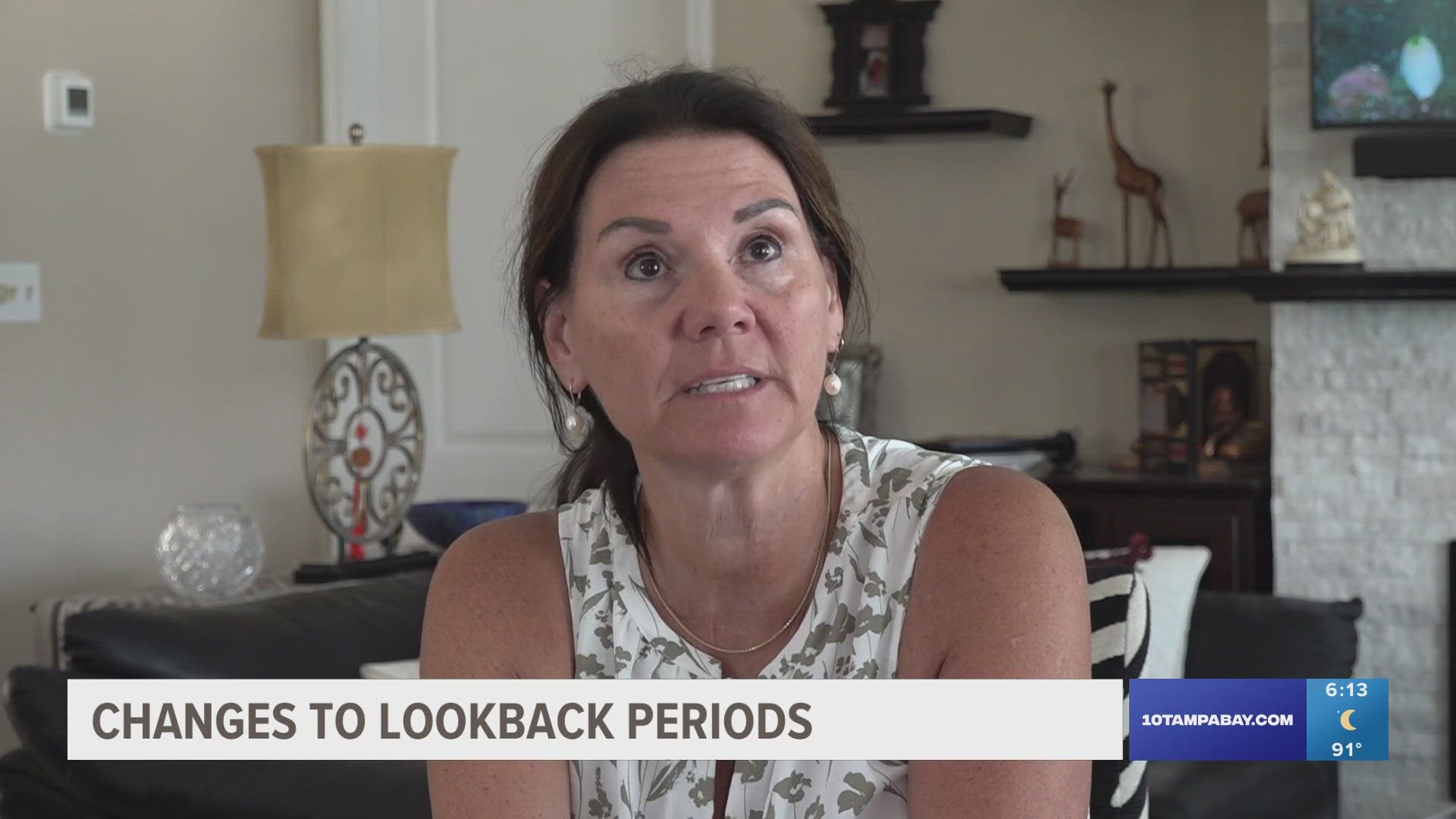PINELLAS COUNTY, Fla. — The city of Belleair Beach recently voted unanimously to lower its lookback period from 5 years to one year. If you read that sentence and wonder what that means — your home's lookback period impacts all homeowners who live in a special flood hazard area.
To understand your lookback, you first need to know about FEMA's 50% rule. This rule applies to anyone who wants to participate in the federally-backed FEMA National Flood Insurance Program (NFIP) to help people purchase flood insurance.
If you live in a special flood hazard area, this impacts you.
The FEMA 50% rule means that if you, a homeowner, need to fix or improve your house, the cost of the work done can not equal or exceed 49% of the home's depreciated market value within the specified lookback period of the municipality issuing the building permit.
Your lookback period is set by the municipality in which you live. Some communities require the cost of improvements to be calculated cumulatively over one or multiple years. Some cities don't have a lookback period at all.
In Belleair Beach, the city is lessening its lookback period to just one year, which gives residents more flexibility in making home repairs.
Just down the road, another beach community is considering changing its lookback period. Treasure Island is considering creating a lookback period of 10 years. Right now, there is no lookback period.
"If it's over the 50% rule, I'm looking at a bulldozer coming into my house," Johanna Klink, a Treasure Island resident, shared.
Klink recently replaced her roof in order to stay in compliance with her home insurance policy. She's grateful that was done before the city voted on changing its lookback period. If the city does opt for a longer lookback period, homeowners could face one of two choices: figure out how to space their home repairs out over a decade or knock down their home and rebuild to code.
"Nobody knows, and it's so impactful," Klink said. "It's a huge problem with people who own property on the beaches. And for it to be such a big issue and to have very little knowledge."
When Klink tried to research lookbacks in Pinellas County, the only article she could find on it was a previous story done by 10 Tampa Bay.
Klink's broker, Cyndee Haydon, has been advocating for shorter lookbacks, and informing everyone she can about the importance of knowing the lookback for your home.
"And it's 50% of a depreciated value [of your home]," Haydon explained. "Which actually confuses people because they pay for a house and they think that it's 50% of that price."
In Oldsmar, the city just reduced its lookback period from 15 years to 5. Haydon said that is still far too long.
"That's still a long time for an area that's very vulnerable with any storm surge," Haydon said. "And so again, I think residents may be surprised if something were to happen that they might not be able to repair their homes."
Haydon said some cities increase their lookback periods in hopes of saving residents money on flood insurance premiums. But the math doesn't always add up.
"On my flood insurance policy, that's $7,200. I live in Madeira Beach. I should get a 15% discount. I get $11," Haydon said.
Where this can really put some people in a pickle — you may need to upgrade your home to comply with insurance. But if you have a longer lookback on your home and have made recent repairs or renovations, your permits could be denied.
"And now I'm starting to tell people that this is what's going on. And I think people's eyes are starting to open," Klink said. This could be devastating for all of us. "
There are now efforts in place to standardize lookback periods across the state. Representative Linda Chaney is advocating for this change.
"I put money in the budget to do a study so that it can guide some future legislation so that our residents can do everything they can to harden their homes against storms, which will also reduce insurance rates," Chaney said. "I think if we standardize the look-back period, it'll make the homes more resilient. It'll be something that the residents can count on."
Chaney said the Office of Insurance Regulation will conduct the study. Their findings will be presented to the legislature, then a bill can be drafted based on those findings.
There isn't one centralized place to find your home's lookback period. You can find it by either searching your city's municipal code or calling the city and asking. Haydon has compiled a list of lookbacks for every Pinellas County city she could find, listed below.
- Bellair: 5-year lookback period
- Belleair Beach: 1-year lookback period
- Clearwater: 1-year lookback period
- Dunedin: 5-year lookback period
- Gulfport: no lookback
- Indian Rocks Beach: no lookback
- Largo: 5-year lookback period
- North Redington Beach: no lookback
- Oldsmar: 5-year lookback period
- Pinellas Park: no lookback
- Safety Harbor: 1-year lookback period
- St. Pete Beach: 5-year lookback period
- St. Pete: no lookback
- South Pasadena: 1-year lookback period
- Treasure Island: no lookback (at the time of this article's publish date)
- Unincorporated Pinellas County: 1-year lookback period
Malique Rankin is an Emmy award-winning general assignment reporter with 10 Tampa Bay. You can email her story ideas at mrankin@10tampabay.com and follow her Facebook, X, and Instagram pages.

